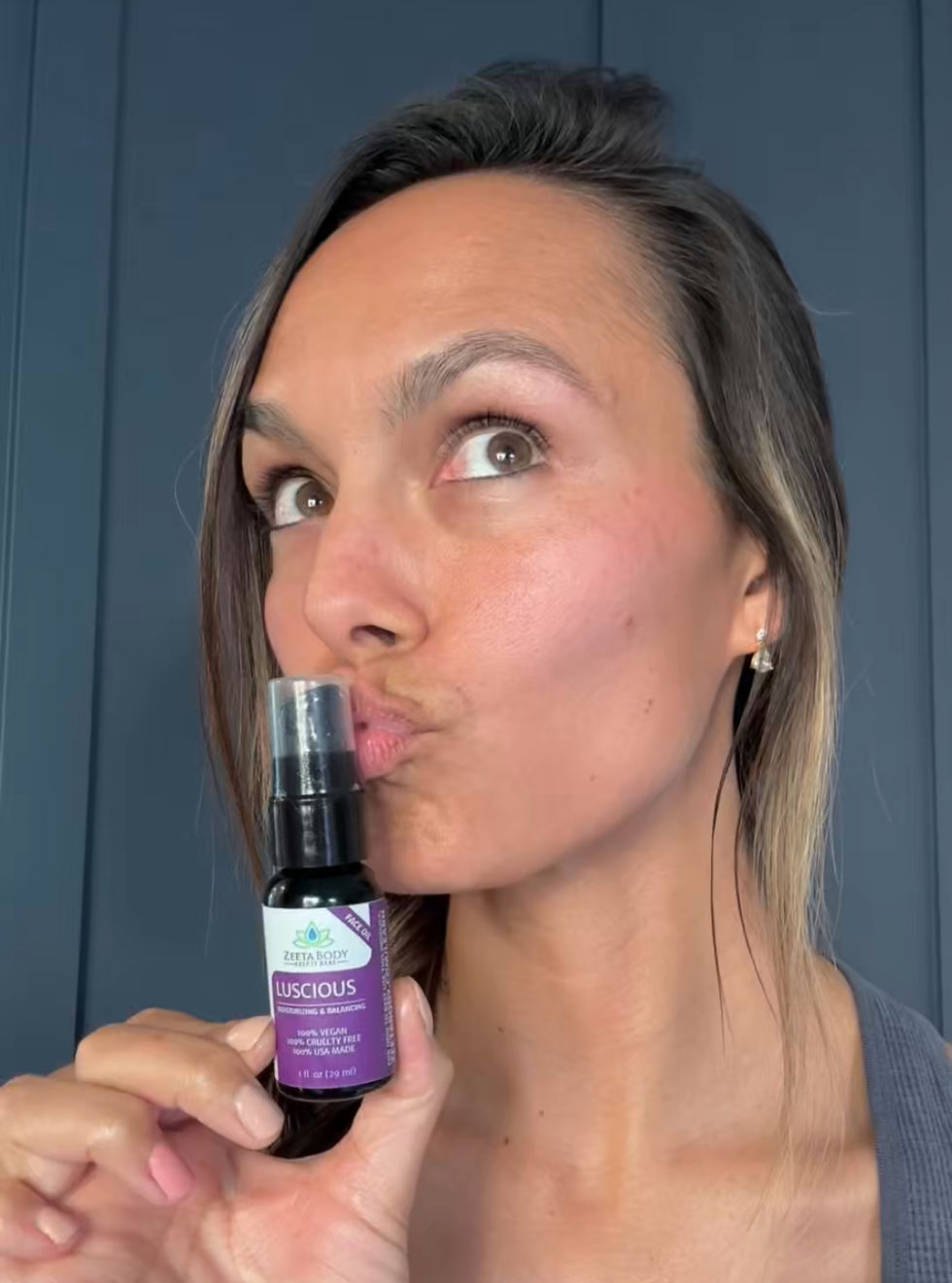A Beginner’s Guide to Aromatherapy at Home
- Christine
- Mar 31
- 5 min read
Aromatherapy is a holistic healing practice that utilizes the natural aromatic compounds found in essential oils. What I appreciate the most about these oils is that they can help improve physical and mental well-being. This beginner's guide to aromatherapy is designed for those who want to incorporate aromatherapy into their home lives. If you want to reduce stress, improve sleep, or enhance your mood, this post will cover the general aspects you need to know.
Aromatherapy Guide: Understanding the Basics
At its core, aromatherapy involves using essential oils from plants to promote physical and emotional health. These oils can be derived from flowers, herbs, trees, and other plant parts. Each essential oil has unique properties and benefits, as well as a unique aroma.
For example, lavender is well-known for its calming effects and is often used to support sleep. On the other hand, peppermint is invigorating and may improve focus. The benefits of aromatherapy can vary depending on the essential oil used and the method of application.
One of the most popular ways to enjoy the benefits of essential oils is through diffusion. An essential oil diffuser disperses the oil into the air, filling the room with a wonderful scent. If you don't have a diffuser, you can spray a diluted mixture of essential oils with distilled water. You can also add essential oils to your body oil or lotion and apply topically to skin, or to Epsom salts to add them to bath water for a soothing experience.
Methods of Using Essential Oils at Home: Beginner's Guide to Aromatherapy
There are several effective methods to use essential oils at home. Here are a few popular ones:
Diffusion/Spritzing
Using an essential oil diffuser or spraying are the simplest ways to enjoy the benefits of aromatherapy. You can choose a diffuser that fits your style and space. Many diffusers not only disperse the aroma but also add moisture to the air, enhancing the overall experience. Similarly, aromatherapy sprays contain water and are simple to use on the go, in cars, hotel rooms, office spaces, hospital rooms, at the gym and at school.
When diffusing, it's important to follow the manufacturer's guidelines regarding oil quantity. Typically, you will add a few drops of essential oil to water in the diffuser, allowing the scent to permeate the room. Alternatively, you can pour Zeeta Body aromatherapy sprays directly into your water-based diffuser.
Topical Application
Topical application involves applying diluted essential oils directly to your skin. Before doing this, it's crucial to dilute the oil with a carrier oil like almond or jojoba oil to prevent skin irritation. All Zeeta Body oils are diluted properly for you and ready to use directly and safely on your skin.
Essential oils should never be applied directly to the skin without dilution. Application can be full body or on pressure points including wrists, temples, and the back of the neck. This method allows the oils to be absorbed directly into your bloodstream.
Bath Additives
Adding essential oils to your bath can create a spa-like experience at home. Not only does it help you relax, but it also allows the essential oils to be absorbed through the skin. This method also requires dilution in a carrier such as Epsom, Sea Salt or oil.
A good rule of thumb is to mix 10-15 drops of essential oil with a cup of a carrier oil or Epsom salt before adding it to your bath water. This helps disperse the oil evenly and reduces the chance of skin sensitivity.
Where to Put Essential Oil on the Body?
Knowing where to apply essential oils can enhance their effects. Here are some recommended areas:
Pulse Points: Applying oils to pulse points (such as wrists and the neck) allows for quick absorption and is often used in perfumes.
Feet: The feet can absorb essential oils effectively, making them a great application area due to their many nerve endings. Soaking feet or applying directly to feet is an effective and relaxing way to benefit from aromatherapy at home.
Heart Area: Applying oils over the heart area may help foster emotional balance and provide a soothing experience.
When applying oils, remember to start with a small amount and observe how your body reacts. If there is any discomfort, wash the area and dilute the application further in the future.
The Benefits of Aromatherapy
Aromatherapy offers numerous benefits that can support your overall well-being. Here are a few key advantages:
Stress Relief
Many essential oils, such as lavender, peppermint, and bergamot, have calming properties that can reduce feelings of stress. Incorporating these oils into your daily routine can promote relaxation and help manage anxiety levels naturally.
Improved Sleep
Sleep issues are common in our fast-paced lives. Essential oils like lavender and cedarwood can create a soothing atmosphere conducive to sleep. A simple bedtime routine that includes diffusing these oils can work wonders for your sleep quality. For more tips on using aromatherapy as a sleep aid, read this post that I wrote.
Enhanced Mood
Essential oils like citrus (such as grapefruit and orange) can invigorate and uplift your mood. Incorporating these scents into your workspace can help improve focus and productivity. I love applying Gratifying Grapefruit Body Oil to my skin in the morning to start my day with a fresh, positive perspective.
In essence, we use a wide variety of essential oils in the products that we offer, making them suitable for various applications. to promote your health and wellness.
Safety Considerations When Using Essential Oils
While essential oils can provide significant benefits, safety is paramount. Here are some essential safety tips to keep in mind:
Always perform a patch test before using a new essential oil topically. Apply a small, diluted amount on a discreet area of skin and wait 24 hours to check for reactions.
Consult a healthcare professional if you are pregnant, breastfeeding or have any medical conditions or allergies before using essential oils.
Keep essential oils out of reach of children and pets, as many oils can be toxic if ingested.
Final Thoughts on Aromatherapy at Home
Embracing aromatherapy at home can be a rewarding experience that enhances your quality of life. With essential oils readily available and various methods to enjoy them, it’s easy to find a routine that works for you. Explore different oils and their benefits to customize your aromatherapy practice effectively. Remember, the key to enjoying aromatherapy is to use it mindfully and safely. With time, you’ll discover how to create a calming and aromatic environment that will transform your home.
Contact me here if you would like to customize an at home routine for you and your family.
In good health, Christine







Comments